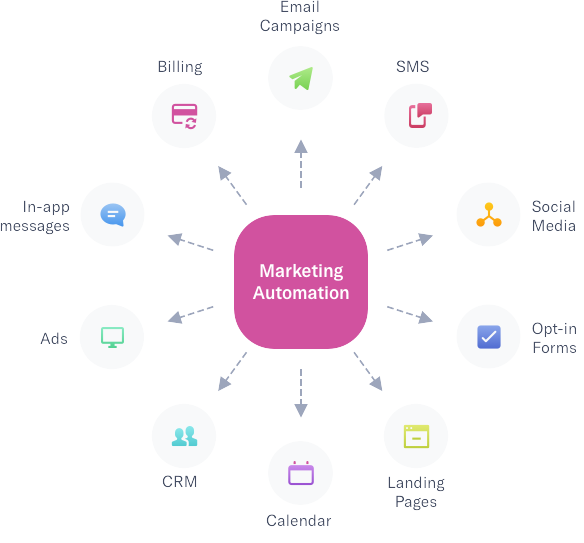In 2024, marketing automation isn't just a tool; it's the backbone of a digital marketing strategy, integral to enhancing the cross-channel customer experience and optimizing your CRM efforts. This guide dives deep into setting precise marketing automation objectives and the steps to achieve them, with practical examples to illuminate the path.
1. Crafting Clear Marketing Automation Goals
Defining Your Ambitions
Setting the stage for a successful marketing automation journey begins with clear, actionable goals. Here are steps to identify and refine these objectives:
- Audit your current marketing efforts: Examine past campaigns to identify pain points. For example, if your email open rates are low, your goal could be to personalize email content to boost engagement.
- Employ SMART criteria: For instance, instead of aiming to "increase email engagement," set a goal to "increase email open rates by 20% within the next quarter."
- Utilize CRM insights: Dive into your CRM to analyze customer behavior and purchase history. This might reveal that customers who watch a demo video are more likely to purchase, guiding you to automate sending demo videos to new leads.

2. Strategizing Your Approach
Technology and Business in Harmony
Choosing the right tools and aligning them with your objectives is crucial. Consider these strategies:
- Integration is key: Ensure your marketing automation platform can seamlessly share data with your CRM. For instance, if a customer fills out a form on your website, this information should automatically update their CRM profile.
- Map the customer journey: Identify key touchpoints. For example, if most conversions happen after a client attends a webinar, automate invitations to webinars for new leads showing high engagement.
- Content personalization: Use CRM data to personalize emails based on past interactions. A customer who frequently purchases a specific product could receive automated emails about related products or upcoming sales.
3. Putting Plans into Action
From Theory to Practice
Effective implementation hinges on thoughtful execution and ongoing optimization:
- Pilot before launch: Test your automated emails on a small group before a full rollout. For instance, if you're automating birthday discount emails, send them to a small segment first to gauge response.
- Audience segmentation: Utilize CRM data to segment your audience for more targeted campaigns. For example, create segments based on product interest, and tailor newsletters with product updates, tips, or user stories specifically related to each segment.
- Adapt and refine: Regularly review performance metrics. If the automated reminder emails for webinar registration are not converting, tweak the call-to-action or timing based on analytics.
Conclusion
Setting specific, data-driven objectives is paramount to truly leverage marketing automation in 2024. By aligning your automation tools with CRM insights and adopting a flexible, test-and-learn approach, you can significantly enhance the cross-channel customer experience and drive meaningful engagement. Remember, the journey doesn't end with implementation; continuous refinement based on customer behavior and campaign performance is key to staying ahead in the ever-evolving digital landscape.
Explore further insights in our "5 Strategies to Unify Your Brand's Cross Channel Customer Experience" for a deep dive into creating a seamless customer journey across all touchpoints.




